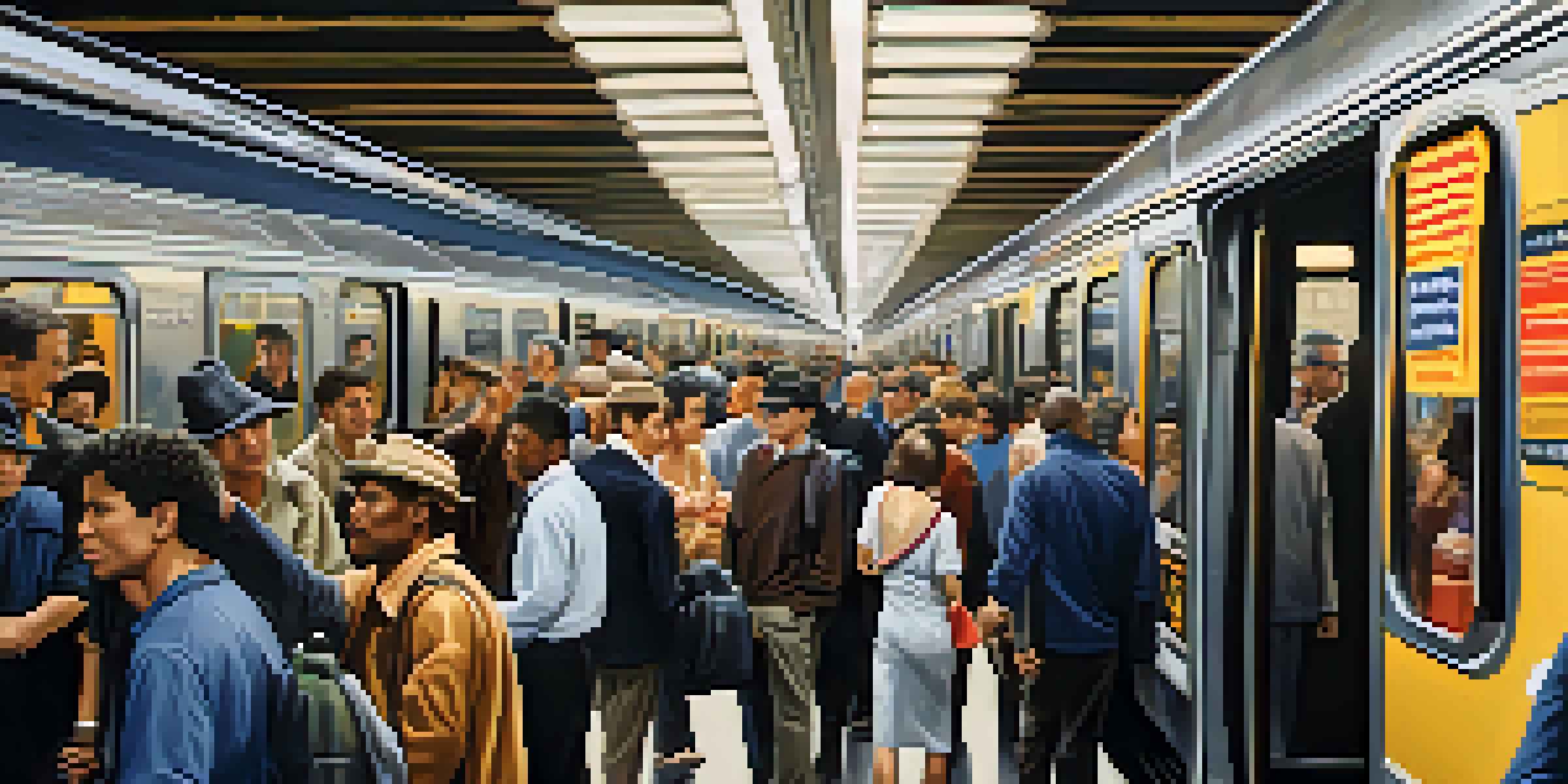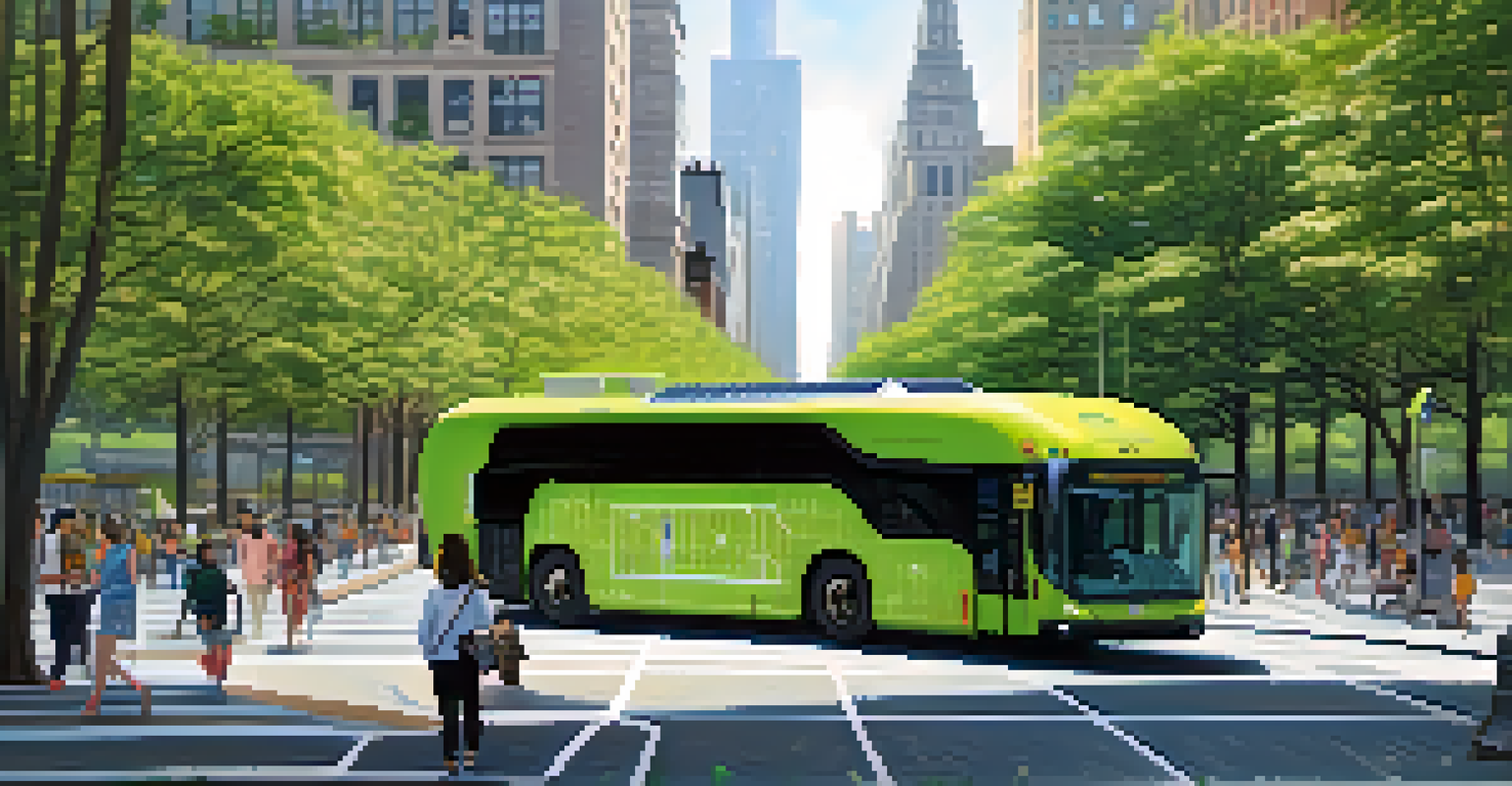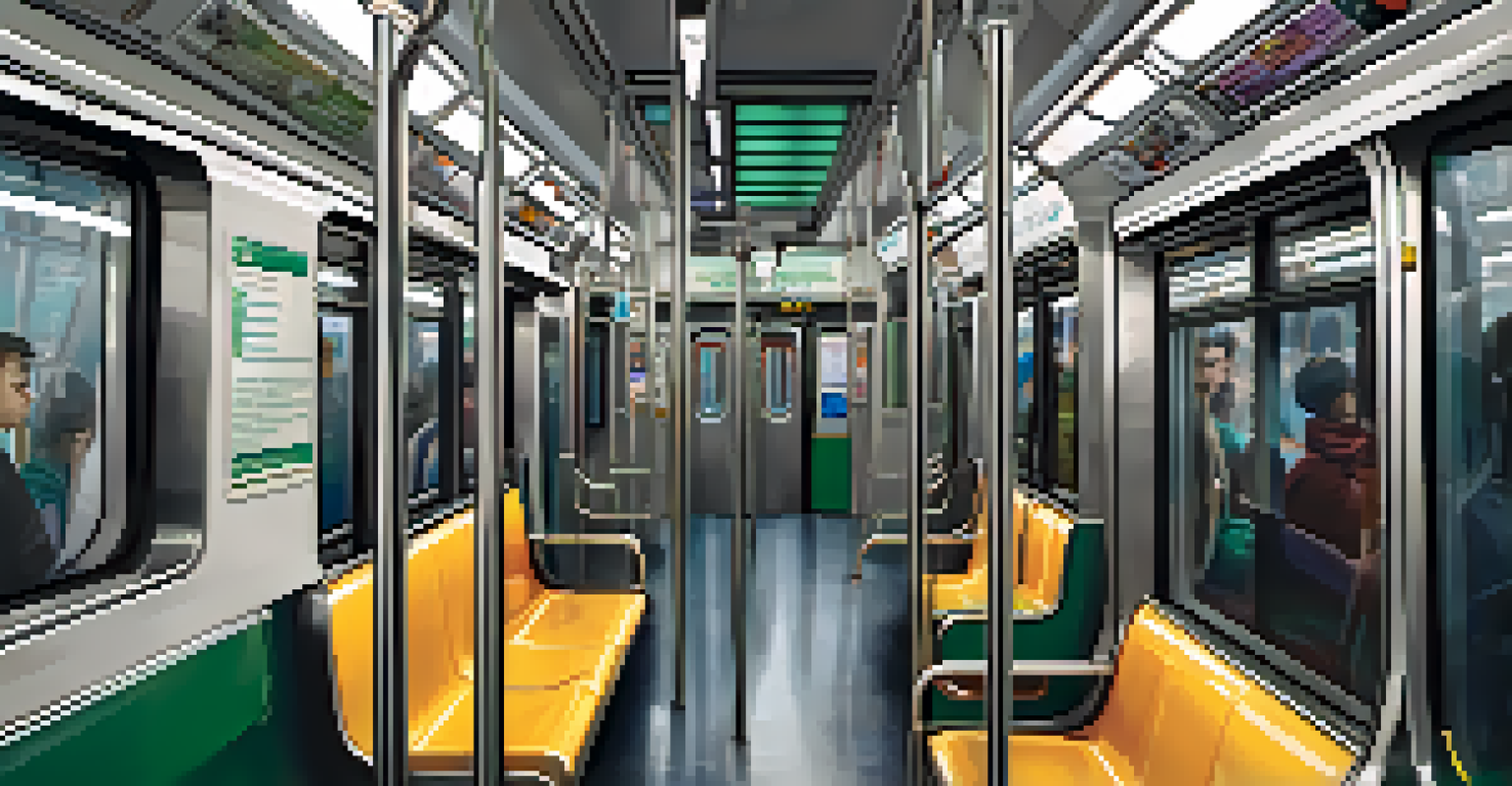Comparative Analysis of NYC Transit with Global Cities

Overview of NYC Transit System: A Brief Introduction
New York City's transit system is a sprawling network that includes subways, buses, and ferries, serving over 5 million riders daily. This vast system is a vital lifeline for many New Yorkers, reflecting the city's hustle and bustle. Despite its size and complexity, the NYC transit system faces both praise and criticism regarding efficiency and accessibility.
The subway is a lifeline for millions of New Yorkers, but it can also be a source of frustration.
In comparison to other global cities, NYC's transit system is unique in its scale and ridership. Cities like London and Tokyo also have extensive public transportation systems, yet they differ significantly in terms of technology and user experience. Understanding these differences can provide valuable insights into potential improvements for NYC's transit system.
As we delve into this comparative analysis, we'll explore various dimensions of NYC's transit, comparing it against notable global cities. From punctuality and safety to user satisfaction and technological advancements, these comparisons will help highlight the strengths and weaknesses of New York's transit landscape.
Punctuality: How On-Time is NYC Compared to Other Cities?
Punctuality is a key metric in assessing any transit system, and NYC's subway often struggles in this area, with delays being a common complaint. In contrast, cities like Tokyo are renowned for their exceptional punctuality, with trains often arriving within seconds of their scheduled times. This reliability is a significant factor that makes public transit more appealing to commuters.

The causes of delays in NYC can often be attributed to aging infrastructure, maintenance issues, and external factors like weather. For instance, heavy rain can lead to service disruptions, which is something that Tokyo's advanced drainage systems help mitigate. By analyzing these factors, we can identify areas for potential improvements in NYC's transit scheduling and operations.
NYC Transit Faces Punctuality Challenges
Delays are a common complaint in NYC's transit system, contrasting sharply with the exceptional punctuality found in cities like Tokyo.
Ultimately, improving punctuality in NYC's transit system could lead to increased ridership and user satisfaction. Learning from cities with successful punctuality records can provide valuable lessons that NYC can implement in its efforts to enhance overall service reliability.
Accessibility: Comparing Transit Options for All Users
Accessibility is a crucial aspect of any transit system, and NYC has made strides in accommodating riders with disabilities. However, challenges still exist, particularly in older subway stations that lack elevators or ramps. Cities like London have made significant investments in accessible transit options, showcasing the importance of universal design in public transportation.
Public transportation is the backbone of a city, connecting people to opportunity and community.
In examining global best practices, we see that cities like Berlin have implemented innovative solutions to improve accessibility, such as real-time information systems designed for visually impaired users. By adopting similar technologies, NYC could enhance the experience for all riders, particularly those with disabilities.
As we consider the future of NYC transit, prioritizing accessibility will be essential in fostering an inclusive environment for all. This commitment not only aligns with global standards but also encourages more people to choose public transit over personal vehicles.
Safety: How Does NYC Transit Ensure Passenger Security?
Safety is a paramount concern for transit systems worldwide, and NYC has invested heavily in measures to protect its riders. From enhanced surveillance to increased police presence, the MTA aims to create a secure environment for its passengers. However, crime rates can fluctuate, sometimes leading to concerns about safety on the subway.
In comparison, cities like Singapore have implemented cutting-edge technology, such as facial recognition and smart surveillance systems, to bolster passenger security. These advancements can serve as a model for NYC, where integrating technology could help alleviate safety concerns and enhance the overall passenger experience.
Accessibility Improvements Needed
While NYC has made progress in accommodating riders with disabilities, older subway stations still present significant challenges.
Ultimately, ensuring safety in NYC's transit system is key to maintaining public trust and encouraging ridership. By adopting best practices from around the globe, NYC can work towards a safer transit environment that caters to all users.
Technology: Innovations Transforming Global Transit Systems
Technology plays a pivotal role in modernizing transit systems, and NYC has begun to embrace innovations in this space. The introduction of contactless payment options and real-time tracking apps are steps in the right direction. However, compared to cities like Seoul, which utilizes AI for predictive maintenance, NYC still has room to grow.
Cities such as San Francisco have also adopted advanced technologies for their transit systems, including smart signage and mobile ticketing. These innovations not only streamline operations but enhance the user experience, making public transit more accessible and user-friendly.
As we look to the future, embracing technology will be essential for NYC to remain competitive with other global cities. By investing in smart infrastructure and user-centric solutions, NYC can evolve its transit system to meet the needs of an increasingly tech-savvy population.
User Satisfaction: Gathering Insights from Commuters
User satisfaction surveys provide a wealth of information regarding riders' experiences with transit systems. In NYC, feedback often highlights issues like overcrowding and cleanliness, which can detract from the overall experience. In comparison, cities like Zurich consistently rank high in user satisfaction thanks to their efficient service and well-maintained facilities.
Moreover, understanding the nuances of user feedback can help NYC identify specific areas for improvement. For instance, implementing regular maintenance and upgrades can address cleanliness concerns, while adjusting service frequency can alleviate overcrowding during peak hours.
Technology Can Enhance User Experience
Embracing advanced technologies like AI and smart signage is essential for NYC to modernize its transit system and improve user satisfaction.
Prioritizing user satisfaction not only enhances the commuter experience but also encourages more people to choose public transit over alternative modes of transportation. By learning from cities with high satisfaction rates, NYC can work towards creating a more enjoyable transit experience for all.
Environmental Impact: Transit Systems and Sustainability Initiatives
Transit systems have a significant impact on urban sustainability, and NYC's commitment to green initiatives is commendable. The city has made strides in expanding its fleet of electric buses and promoting energy-efficient subway operations. However, cities like Amsterdam lead the way in sustainable transit, with a strong emphasis on cycling and pedestrian-friendly infrastructure.
By examining global efforts to reduce environmental footprints, NYC can adopt innovative practices that promote sustainability. For example, integrating more cycling lanes and expanding bike-sharing programs can reduce reliance on motor vehicles and enhance overall urban mobility.

As cities worldwide strive for greener transit solutions, NYC has the opportunity to position itself as a leader in sustainability. By prioritizing environmentally friendly initiatives, NYC can contribute to global efforts to combat climate change while improving the quality of life for its residents.